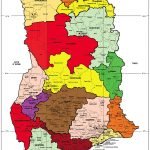Africa is a vast and diverse continent, home to over 50 countries, each with their unique currency. Some of these currencies are stronger than others, and some are more valuable than others.
But what factors determine the strength and value of a currency? Which is the strongest currency in Africa? What is the highest currency in Africa? We’ll explore all these in more detail in this article.
African currencies have faced their fair share of challenges, including inflation, lack of economic diversity, and dependence on foreign aid. Yet, despite these challenges, African economies continue to grow and evolve, and their currencies play a crucial role in this growth. So let’s dive deeper into the strongest and highest currency in Africa. Let’s get started!

Strongest Currency in Africa
A strong currency holds its value well against other currencies, meaning you can buy more with it than you could with a weaker currency. So, what factors determine the strength of a currency?
Several things can influence the strength of a currency, including the country’s economic stability, political stability, and foreign investment. Therefore, a strong currency is generally a good indicator of a healthy and growing economy.
So, which currently holds the title of the strongest in Africa? Currently, the title goes to the Libyan Dinar. The Libyan Dinar has a strong exchange rate against other currencies, which means you can buy a lot with it. Its history and stability have also contributed to its strength.
Since its introduction in 1971, the Libyan Dinar has been backed by the country’s vast oil reserves, which has helped maintain its stability and strength. Despite the political instability in Libya over the years, the currency has managed to maintain its value.
In addition to its history and stability, the Libyan economy has been performing well in recent years, with a GDP growth rate of over 10% in 2019. This solid economic performance has helped support the value of the Libyan Dinar.
Of course, other African currencies, such as the Moroccan Dirham and the Botswana Pula, are also considered vital. However, the Libyan Dinar currently holds the title of the strongest currency in Africa.

Highest Currency in Africa
When we talk about a high currency, we’re referring to a currency with a high nominal value. A currency that is worth a lot in terms of its face value. So, what factors determine the high value of a currency?
Economic stability, political stability, and the country’s natural resources can influence a currency’s high value. A high currency is often seen as a sign of a strong and prosperous economy.
So, which currency has the highest value in Africa? The answer might surprise you – it’s the Tunisian Dinar! This is because the Tunisian Dinar has a high nominal value, which means that each unit of the currency is worth a lot compared to other currencies.
The Tunisian Dinar has a long and exciting history, dating back to the days of the Roman Empire. Over the years, various rulers and governments have used the currency, and its value has fluctuated along the way.
Today, the Tunisian economy is one of the strongest in Africa, with a diversified economy that includes agriculture, mining, and manufacturing. The country’s political stability has also helped support the value of the Tunisian Dinar.
Compared to other currencies, the Tunisian Dinar is worth a lot. For example, one Tunisian Dinar is equivalent to roughly 0.35 USD. This high value makes it an attractive currency for investors and tourists alike.
Note: There’s almost no difference between Strongest Currency in Africa and the Highest Currency in Africa, as similar factors were considered to determine them. Let’s look at the top 10 list of the strongest and highest currencies in Africa.

Top 10 Strongest and Highest Currency in Africa
1. Tunisian Dinar (TND)
The Tunisian Dinar is the official currency of Tunisia and is regulated by the Central Bank of Tunisia. It was introduced in 1958, replacing the French franc shortly after the country gained independence from France. The currency has a relatively stable exchange rate and is widely used in the country.
The Tunisian Dinar is currently the strongest currency in Africa. Tunisia is a small country located in North Africa. Its economy mainly depends on the export of textiles, electronics, and agriculture. However, the country has a stable political environment and has implemented economic reforms in recent years to boost its economy, contributing to the stability of its currency.
Symbol: DT
Code: TND
Exchange rate: 1 USD = 2.83 TND
2. Libyan Dinar (LYD)
The Libyan Dinar is the official currency of Libya and is regulated by the Central Bank of Libya. It was introduced in 1971, replacing the Pound Sterling. The currency has a relatively stable exchange rate and is widely used in the country.
The Libyan Dinar is another strongest and highest currencies in Africa. Libya is a country rich in oil and gas reserves. Therefore, its economy heavily relies on oil and gas exports.
The highest denomination of the Libyan Dinar is the 50 dinar note, worth around USD 35. This is higher than the highest denomination of any other currency in Africa.
However, its value has fluctuated over the years due to political instability and economic sanctions. However, it has remained one of the most valuable currencies on the continent.
Symbol: LD
Code: LYD
Exchange rate: 1 USD = 4.48 LYD
3. Moroccan Dirham (MAD)

The Moroccan Dirham is the official currency of Morocco and is regulated by the central bank of Morocco, Bank Al-Maghrib. It was introduced in 1959 and replaced the Moroccan franc. The Moroccan Dirham is widely used throughout the country and is accepted in the Spanish cities of Ceuta and Melilla, located in Northern Africa.
This Currency stability over the past few years can be attributed to the country’s diverse economy, which includes agriculture, mining, and tourism. In addition, Morocco has also implemented several economic reforms to attract foreign investment and boost its economy, contributing to the strength of its currency. As a result, the country’s economy has been growing at an average rate of 3.7% per year over the past decade.
Morocco is also a popular tourist destination, with its rich history, culture, and natural beauty attracting visitors from around the world. As a result, the tourism industry contributes significantly to the country’s economy and helps to maintain the stability of the Dirham.
Symbol: DH or د.م.
Code: MAD
Exchange rate: 1 USD = 8.90 MAD
4. Botswana Pula (BWP)
The Botswana pula is the official currency of Botswana and is regulated by the Bank of Botswana. It was introduced in 1976, replacing the South African Rand. The currency has a relatively stable exchange rate and is widely accepted in the country.
The currency is backed by the country’s well-managed economy, which depends on diamond mining. The country’s diamond mining industry is the largest in the world. As a result, the country’s GDP has grown at an average of 4.5% per year over the past decade. In addition, the country’s inflation rate has remained low, averaging around 3% over the past decade, contributing to the strength of the currency.
Symbol: P
Code: BWP
Exchange rate: 1 USD = 10.74 BWP
5. South African Rand (ZAR)
The South African Rand is the official currency of South Africa. The currency is issued by the South African Reserve Bank and is divided into 100 cents. The Rand was first introduced in 1961, shortly after South Africa became a republic.
South Africa is the second-largest economy in Africa, with a population of over 59 million people. The country is known for its mineral resources, including gold, platinum, and diamonds. However, its economy is also diverse, with vital agriculture, manufacturing, and services sectors.

The Rand has faced significant challenges, mainly due to political instability and high levels of inequality. Despite these challenges, South Africa has managed to maintain a relatively stable economy, with a GDP growth rate of 4.6% in 2021.
The country has also taken steps to address some of the underlying issues that have historically affected its economy, including implementing fiscal reforms and investing in infrastructure.
Symbol: R
Code: ZAR
Exchange rate: 1 USD = 14.73 ZAR
6. Eritrean Nakfa (ERN)
The Eritrean Nakfa is the official currency of Eritrea and is regulated by the Bank of Eritrea. It was introduced in 1997, replacing the Ethiopian Birr. The currency has a relatively stable exchange rate and is widely used in the country.
The Eritrean Nakfa is one of the strongest currencies in Africa, with an exchange rate of around 1 ERN to 0.066 USD. The currency has been relatively stable in recent years, despite the country’s political and economic challenges.
Eritrea is a small country located in the Horn of Africa. Its economy is mainly dependent on agriculture, mining, and fishing. Despite its economic challenges, the Eritrean government has maintained a stable currency by implementing strict monetary policies.
Eritrean Nakfa (ERN)
Symbol: Nfk
Exchange rate (as of May 10th, 2023): 1 USD = 15.00 ERN
7. Ghanaian Cedi (GHS)
The Ghanaian Cedi is the official currency of Ghana and has been in circulation since 2007, replacing the old currency, the Ghanaian Cedi (GHC). The currency is issued by the Bank of Ghana and is known for its stability.

Ghana’s economy is driven by agriculture, mining, and oil exports. The country has a stable political climate and is one of the most peaceful countries in Africa, which has helped maintain the currency’s value.
The currency has been volatile in recent years, primarily due to inflation and high public debt. However, according to Bloomberg research, the GHS was the best currency against the dollar in 2020 worldwide. The US agency reported that the GHS increased by 3.9%, the most significant rise among over 140 legal tenders monitored; no wonder it’s one of the strongest currencies in Africa.
According to economic and financial statistics from Ghana’s central bank, the currency declined by 54.2% versus the USD in 2022. This made Cedi lose 45% of its value against USD. As a result, the Ghanaian Cedi dropped spots on this ranking of Africa’s most valuable currencies.
However, it is backed by the country’s rich natural resources, including gold, cocoa, and oil. The Ghanaian Cedi was first introduced in 1965 and has undergone several changes.
Symbol: GH₵
Code: GHS
Exchange rate: 1 USD = 6.02 GHS
8. Zambian Kwacha (ZMW)
The Zambian Kwacha, also known as ZMW, is the official currency of Zambia. The currency was first introduced in 1968, replacing the former Zambian pound. The Zambian Kwacha is divided into 100 ngwees.
Zambia is a landlocked country in Southern Africa, with a population of over 18 million. The country is known for its abundant natural resources, including copper, cobalt, and emeralds. Its economy largely depends on the mining sector, which accounts for a significant portion of its GDP.
Despite its mineral wealth, Zambia has faced significant economic challenges recently, including high debt levels and inflation. In addition, the country has also been affected by the global COVID-19 pandemic, which has impacted its economy and healthcare system.
To address some of these challenges, the Zambian government has implemented economic reforms and increased transparency in its financial systems. These efforts have helped to stabilize the Zambian Kwacha and improve investor confidence in the country’s economy. This has made the currency the highest currency in Africa
Symbol: ZK
Code: ZMW
Exchange rate: 1 USD = 14.72 ZMW
9. Seychellois Rupee (SCR)
The Seychellois Rupee (SCR) is the ninth strongest currency in Africa. It is the official currency of Seychelles. The Central Bank of Seychelles issues the SCR. The currency was introduced in 1914, replacing the Indian rupee used since 1877. The Seychellois Rupee is divided into 100 cents.
Seychelles is an island nation located in the Indian Ocean, northeast of Madagascar. Its economy is primarily based on tourism and fishing. The country has a small population of around 100,000 people.
Seychelles has managed to maintain a relatively stable economy, with low inflation rates and a steady GDP growth rate. In 2021, the country’s GDP growth rate was estimated to be 7.5%, which is a significant improvement from the negative growth rate of -13.8% in 2020 due to the impact of the pandemic.
Symbol: ₨
Code: SCR
Exchange rate: 1 USD = 14.86 SCR
10. Egyptian Pound (EGP)
The Egyptian Pound is the official currency of Egypt and has been in circulation since 1834. The Central Bank of Egypt issues it, one of Africa’s most traded currencies.
Egypt’s economy is primarily based on tourism, agriculture, and the Suez Canal. The country is also home to numerous historical sites, such as the Pyramids of Giza and the Valley of the Kings, attracting millions of tourists annually. The Egyptian Pound has remained relatively stable despite political instability in recent years.
Symbol: E£
Code: EGP
Exchange rate: 1 USD = 16.07 EGP
Several factors, such as economic stability, GDP growth, inflation rates, and political stability, influence the strength of these currencies. However, it is essential to note that while these currencies are considered vital, they can still be impacted by external factors such as global economic conditions, natural disasters, and political instability.
Checkout even more details about the strongest and highest currency in Africa via the video link below:
Conclusion
We’ve talked about the strongest and highest currencies in Africa. The strongest currency in Africa is the Libyan Dinar, while the highest currency in Africa is the Tunisian Dinar. These currencies are solid and high, respectively, due to various factors such as economic stability, natural resources, and foreign investment.
The above-listed currencies have been ranked based on their strength and stability against the US dollar. However, understand that currency exchange rates can fluctuate frequently due to various factors, such as political unrest, natural disasters, and changes in global economic conditions.
That’s how much I can take on the ” Strongest and Highest Currency in Africa.” Drop your thoughts in the comments box below. Thanks for reading!









